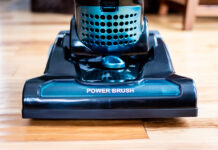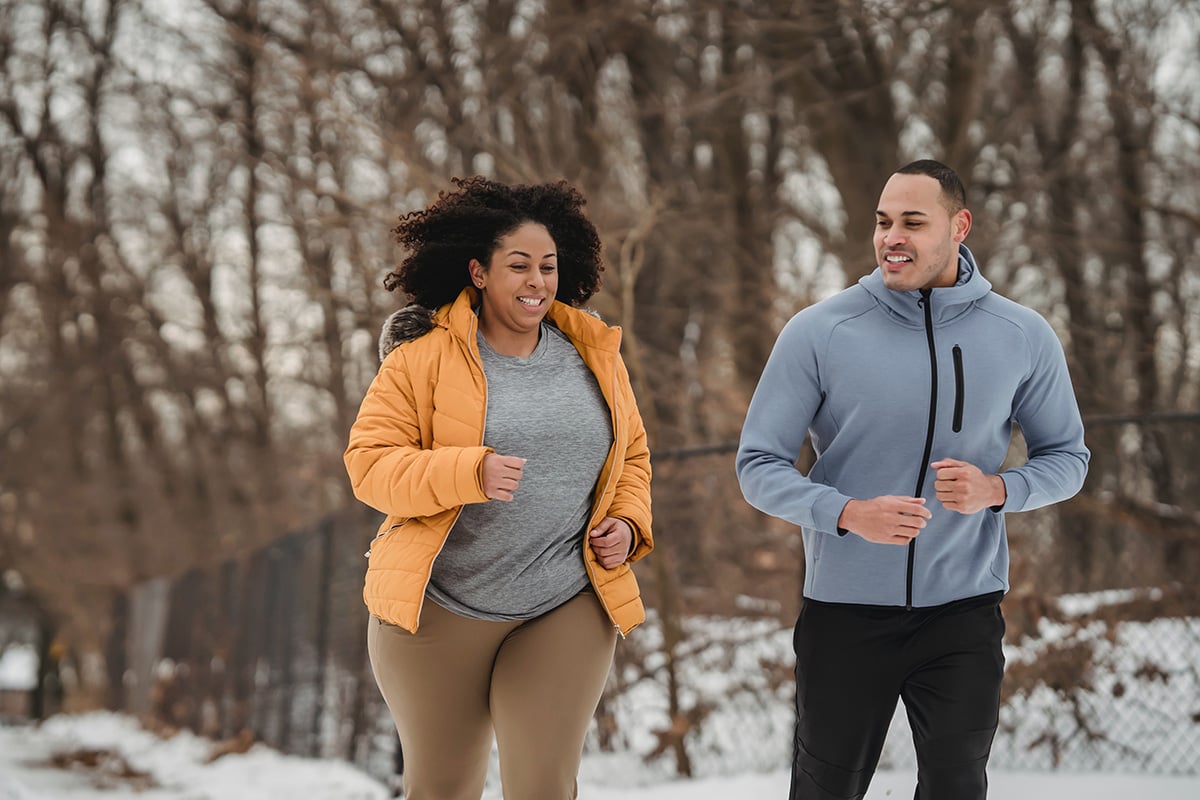Cold-weather running gear lets you enjoy training and exercise despite extreme weather changes. With the colder weather beginning to make a steady and continuous presence this season, runners must change their regular routines and their cold-weather running gear. Some runners take these few months to get to know their treadmill, hoping for a random warm day to pop up.
Others, however, do everything they can to avoid the “dreadmill” and hit the pavement each day, even if that pavement is covered in snow. Cold weather running calls for special precautions, special gear, and new training plans. But if you’re new to cold-weather running, you may need some guidance on what cold-weather running gear you should wear.
Cold Weather Running Gear


Those who love running outside do not let cold weather stop them. You just have to be prepared with the proper cold-weather running gear. Snow, ice, freezing rain, and extreme temperatures can’t stop a dedicated runner from hitting the pavement as long as she has the right cold-weather running gear. So hit the shops to get the things you need to hit the pavement. With the addition of long sleeve shirts, running tights, gloves/mittens, and a hat, you will be ready to run.
- Layer Up: Your running temperature will determine how much you need to layer. Know that layering is a work of trial and error for many runners. Some runners like to “embrace the suck” and wear less to start off their run so they don’t get overheated. Others don’t mind taking off layers as they run if needed. It may take a few runs for you to figure out what is comfortable for you.
- Running Tights: Basic non-wicking running tights may not keep you warm if running temperatures are extremely cold. You may need to spring for thermal tights to wear under your regular running tights or pants (or to be worn by yourself if you’re the “embrace the suck” type of runner).

- Vest: Many runners complain of overheating in the space that seemingly isn’t working as hard – their arms. With that in mind, some opt for a thermal vest rather than a layering jacket so that their arms and shoulders stay a bit cooler, but their core is kept warm.
- Face Mask: No, you aren’t going to rob a bank – but you might look like it. Full-face masks are a must in cold and windy weather. Many go over your head for an extra layer of warmth, while others may just cover your neck and face. Both types can be pulled down if you get too warm, though.
- Sunglasses: Sunglasses are crucial during the winter months. Whether you’re trying to protect your eyes from the reflection of the sun off the snow or wind in your face, sunglasses can protect your eyes from more than just regular UV rays even on cloudy days.
- Snow Chains: Sure, you have snow chains for the tires on your car, but did you know that you can get them for your running shoes too? These chains attach to your regular running shoes and will help them grip in wintry conditions. But caution and common sense are a must during any icy conditions. A skipped run is better than a run that ends in a serious injury.
Running in the Cold
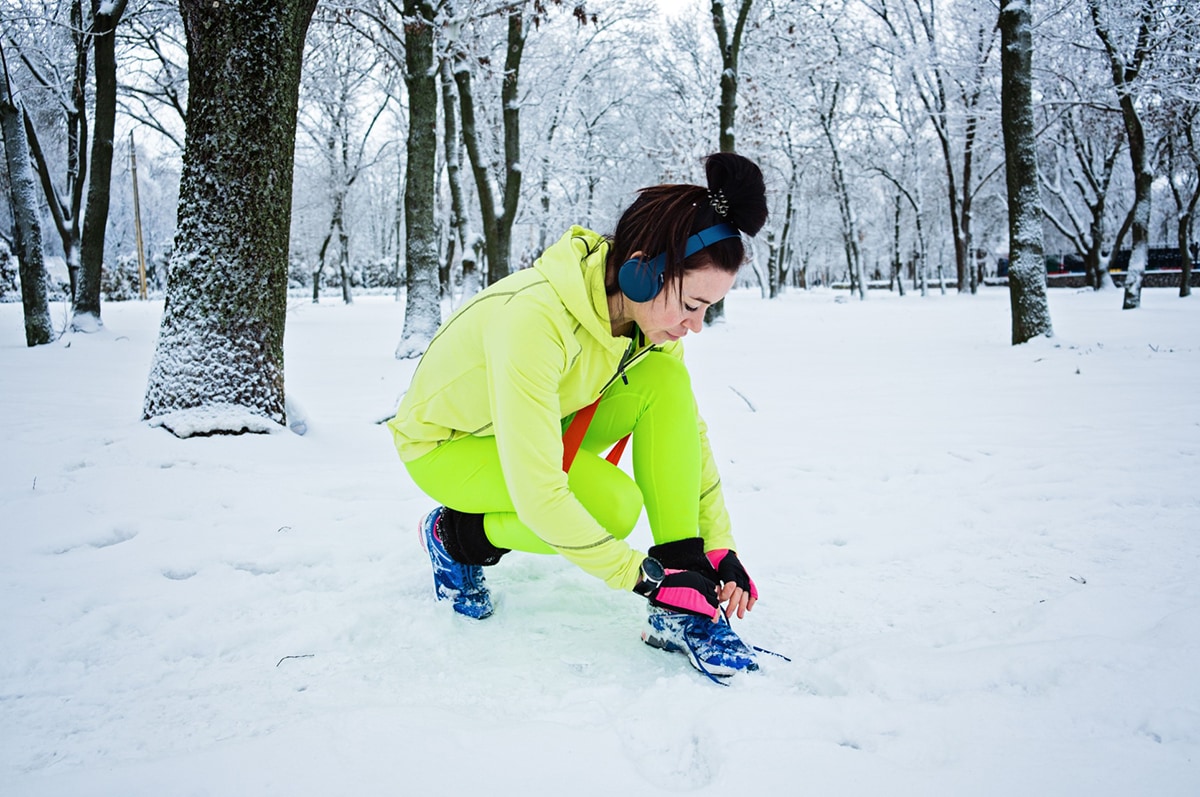
Running comfortably in cold weather can depend on quite a few variables. How cold is it? Is there any active precipitation? What is your personal preference for body heat temperature? Is there snow or ice on the ground? All of these things, and others, will change what you will need or what to prepare for before you head out the door. But with a basic understanding of your body’s needs when working out in cold weather, you will be better equipped for those changes.
Read More: The 5 Best Face Yoga Exercises
When you are exposed to cold temperatures, your body reacts accordingly to help you warm up. Your muscles constrict, often causing pain in your extremities and making it harder to breathe. Your nose starts running as a response to coating your nasal passages from the dry air. All of these combined body changes can make for an uncomfortable and difficult run. Wearing the correct cold-weather running gear and layering up can help with these inconveniences, but expect your winter runs to simply be more difficult than the warmer months.
In addition to temperature changes, you also have to deal with the lack of daylight. You will have fewer day time hours to run, perhaps making you change your daily routine or forcing you to run in the dark. Special precautions and added safety awareness have to be used in these conditions.
Cold Weather Running Tips
Change your Routine
Since it’s now getting light later and dark earlier, you may have to change the time of day that you run. If you can’t do that because of work or kids, you will need to take special precautions to run in the dark.
Running in the Dark
Be sure to wear a headlamp, a reflective belt, and bright clothing to counteract the darkness.
Figure Out the Running Temperature

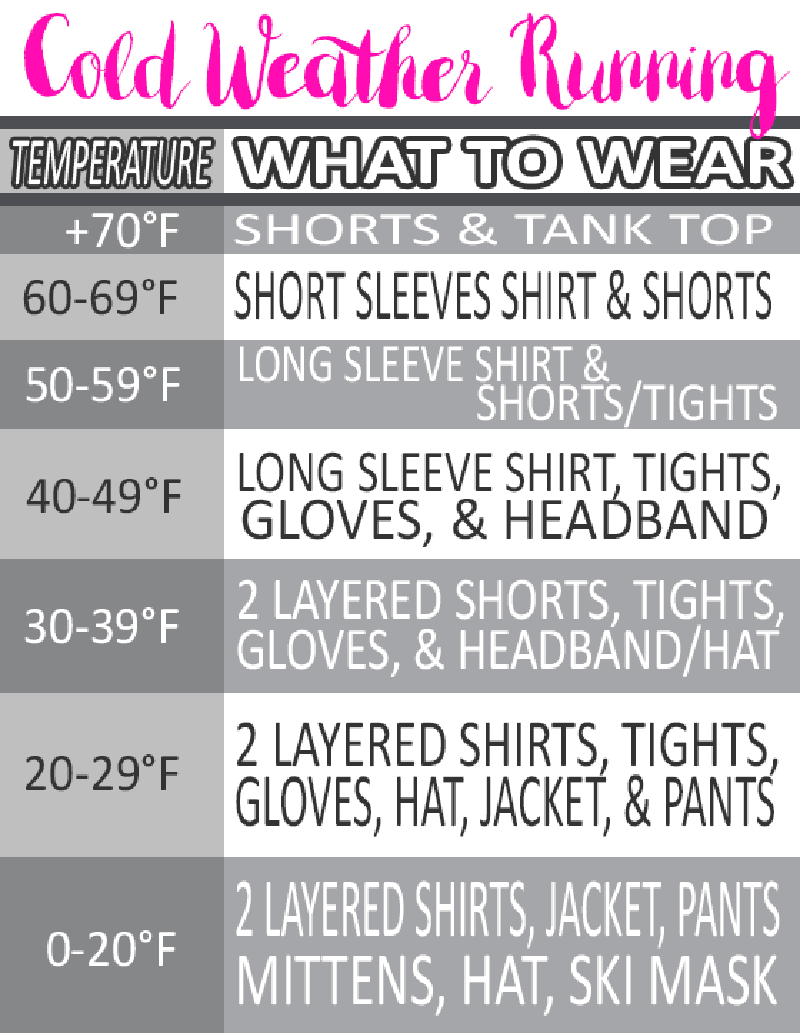
The outdoor temperature isn’t the only temperature to which you have to pay attention. It is recommended to add an additional 10-20 degrees to the outside temperature (or “feels like” temperature) to determine what to wear. Below is a chart to help you decide what to wear after you have added a few degrees for your body heat while moving.
Precipitation
If it recently snowed or rained, you may have to take extra precautions depending on the conditions. Neighborhood sidewalks may not be treated, so if you can run safely on the road it may be the better option. Roads are often treated with sand or salt, and they provide more traction as opposed to smooth concrete. They also are warmer because of the traffic running over it allowing the snow and ice to melt quicker.
Bag Your Feet
It sounds silly, but putting your feet in baggies will help keep out the cold and the wet slush. Just be sure to put your socks on before you put the baggies on – otherwise your feet will overheat and stick to the bags, making for an uncomfortable run.
READ MORE: How to Become a Runner – Running for Beginners
Pre-Run Warmup
Before you head outside into the cold, warm up your body inside by doing a few quick exercises like jumping jacks, butt kickers, jump rope, or sun salutations. This will help to not shock your body so much when you feel a drastic change in temperature.
Post-Run Change
No matter how cold it is outside your body will still perspire. The wetness will become apparent as soon as your body realizes it’s not moving anymore. The wet combined with the cold temperatures will make you feel even colder than you did when you first started running, even though your body temperature is still high. The best way to counteract this is to change your cold-weather running gear into something dry following your run.
Cold Weather Running with Kids
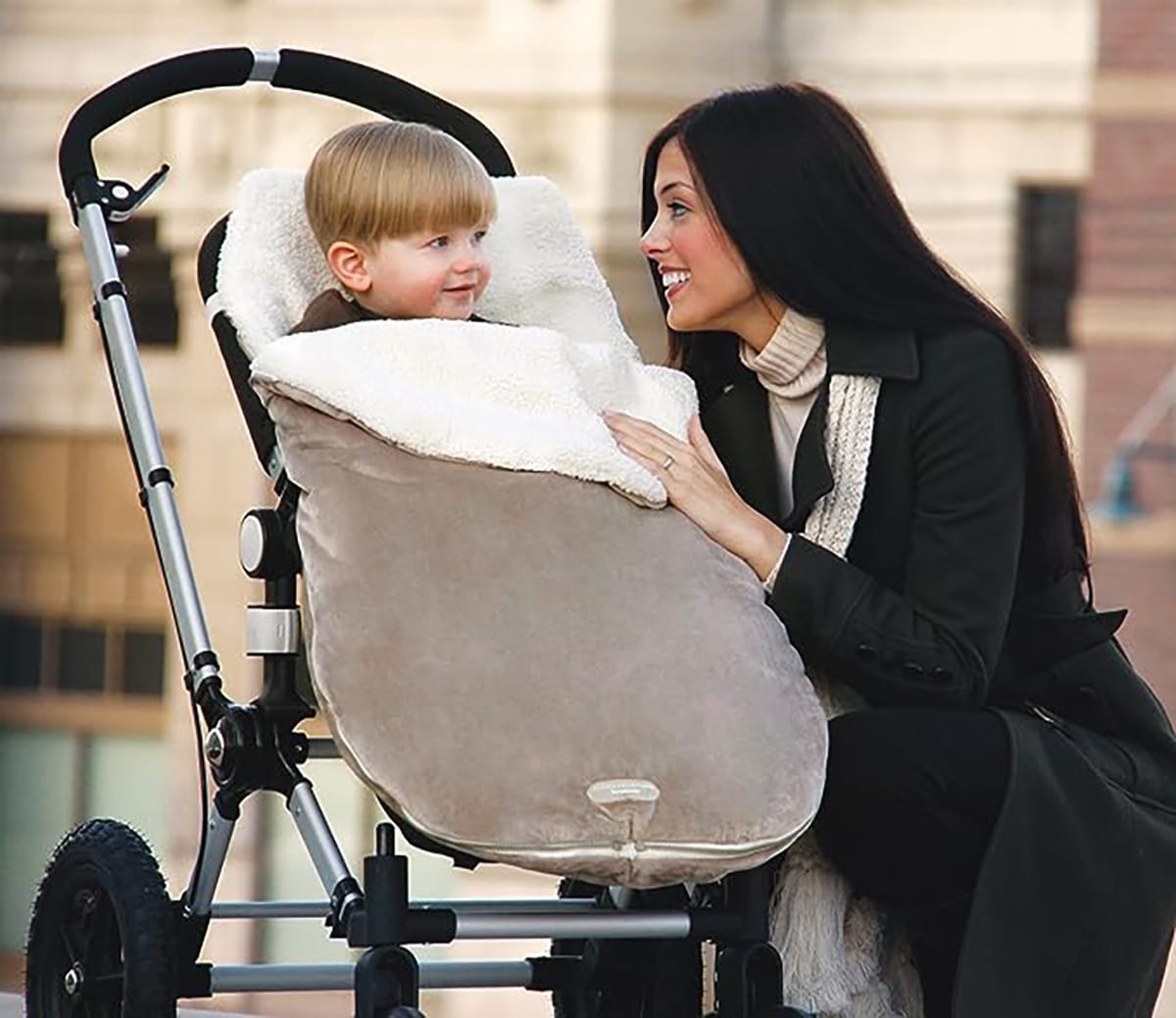
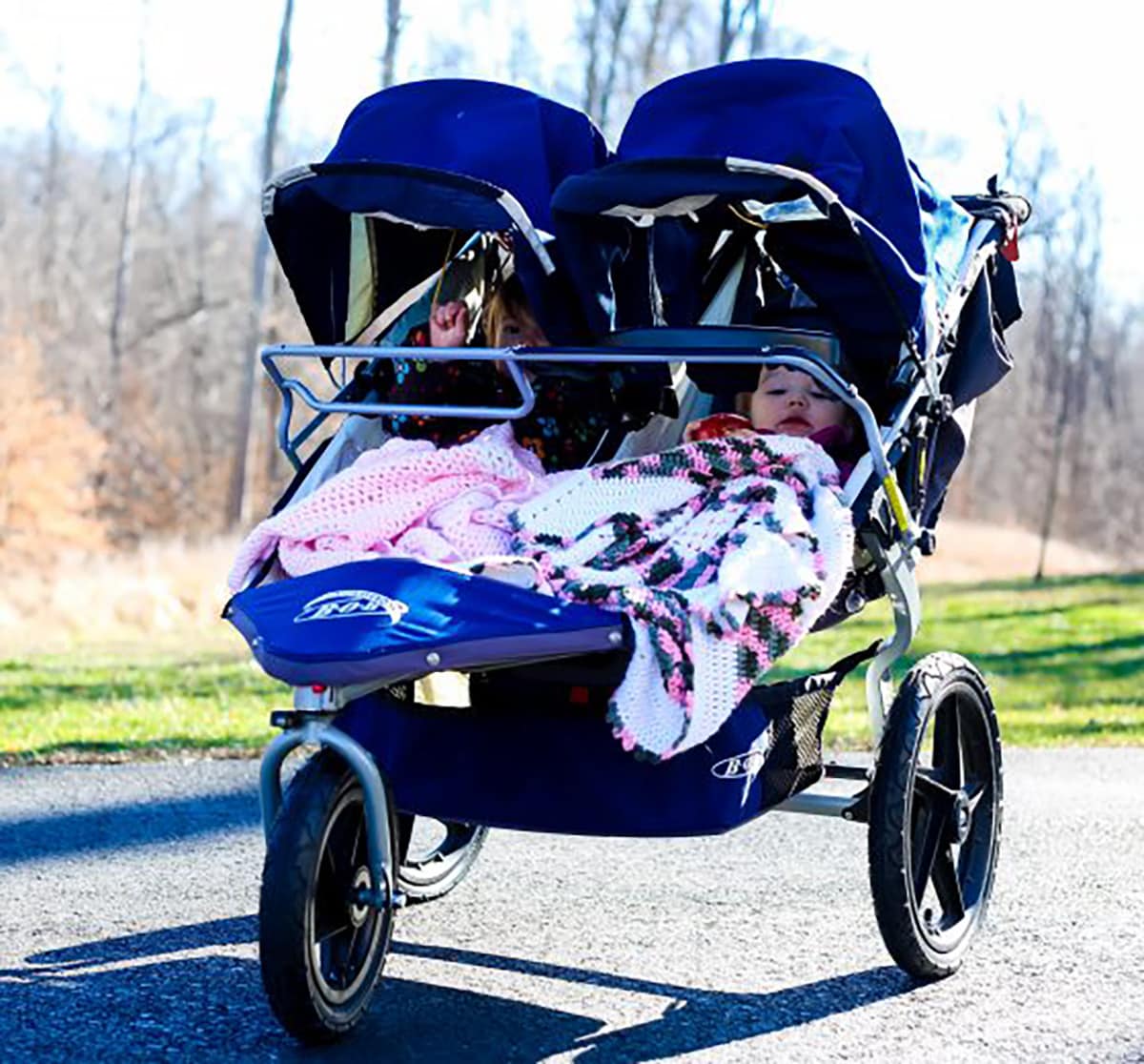
Sometimes moms have to squeeze in their workouts with the kids. If you are a runner, you don’t have to let the cold weather deter you from running outside with your kids. Below are a few things you can do to ensure that your kids are warm and comfy while chilling in their stroller (seriously, what do they have to complain about? You are doing all the work!).
READ MORE: Running in the Dark – 10 Tips to Keep You Safe
- Wind Guard: The most important piece of cold weather running gear – besides coats, hats, gloves, snacks, and the iPad, obviously – is a rain cover for your stroller. Even if it’s not raining, a rain guard helps to keep the cold air and wind out of the stroller. Your kids will be toasty warm under there, and bonus: it also will be harder to hear them whine.
- Tire Chains: These aren’t actual chains like you would buy for your car or for your running shoes, but tying zip ties around your stroller’s tires will help add traction when pushing in icy conditions.
- Footmuff: Footmuffs are great for cold weather running. They are like little sleeping bags made just for your stroller, keeping your children warm without having to stop 50 times to pick up and tuck dropped blankets.
Running with kids isn’t always fun, but it’s a bit easier when you’re prepared with the right cold-weather running gear. And don’t be afraid to stop and throw a couple of snowballs – make your run fun for everyone!
Running in the cold is difficult, even for the most dedicated and experienced runners, but when you layer up with the proper cold-weather running gear your run will continue to be enjoyable. Runny noses, tight muscles, burning lungs, and freezing fingers and toes would make anyone want to call it quits. But with the right cold weather running gear and the right mindset, you will be running comfortably in the icy weather in no time!
Photo Credits: Lauren Lomsdale, Kasia
WANT TO READ MORE?
Check out 10 Tips for Choosing a Gym Membership if you would rather run on a treadmill during the cold months.
CONNECT WITH DAILY MOM
💖 NEWSLETTER: DAILY READS IN YOUR INBOX 💖
Sign up to receive our picks for the best things to do, see and buy so you can relax and focus on more important tasks! Let us help you be the best version of yourself you can be!
BE SOCIAL WITH US
📌 LOVE IT? PIN IT!📌







